Town hall
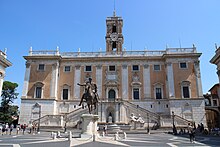
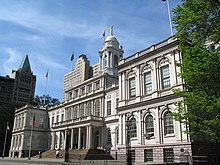


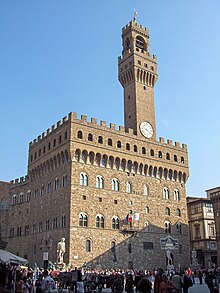
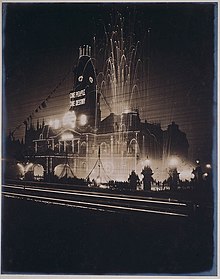
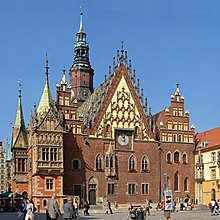

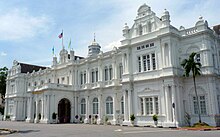
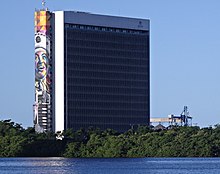

Inlocal government,acity hall,town hall,civic centre(in theUKorAustralia),guildhall,ormunicipal building(in thePhilippines) is the chiefadministrativebuilding of a city,[3]town, or othermunicipality.It usually houses thecityortown council,its associated departments, and their employees. It also usually functions as the base of themayorof a city, town,borough,countyorshire,and of the executive arm of the municipality (if one exists distinctly from the council).
By convention, until the middle of the 19th century, a single large open chamber (or "hall" ) formed an integral part of the building housing the council. The hall may be used for council meetings and other significant events. This large chamber, the "town hall" (and its later variant "city hall" ) has become synonymous with the whole building, and with the administrative body housed in it. The terms "council chambers", "municipal building" or variants may be used locally in preference to "town hall" if no such large hall is present within the building.
The local government may endeavor to use the building to promote and enhance thequality of lifeof the community. In many cases, "town halls" serve not only as buildings for government functions, but also have facilities for various civic and cultural activities. These may include art shows, stage performances, exhibits, and festivals. Modern town halls or "civic centres" are often designed with a great variety and flexibility of purpose in mind. In some European countries, the town hall is the venue for the declaration ofChristmas Peace,such asTurkuandPorvooinFinland[4]andTartuinEstonia.[5]
As symbols of local government, city, and town halls have distinctive architecture, and the buildings may have great historical significance – for example theGuildhall, London.City hall buildings may also serve ascultural iconsthat symbolize their cities.
Nomenclature[edit]
InCommonwealth countries,the term "town hall" may be used even in a city. This is often the case in theUnited Kingdom(examples beingManchester Town HallandLiverpool Town Hall),Australia(Sydney Town Hall),New Zealand,and elsewhere.
People in some regions use the term "city hall" to designate the council offices of amunicipalityofcity status.This is the case inNorth America,where a distinction is made between city halls and town halls. The term is also sometimes (but more rarely) used as a name in Commonwealth countries: for example, for the City Halls ofBrisbanein Australia, and ofCardiff,NorwichandBristolin the UK.City HallinDublin,Ireland, is another example.City Hallin London, opened in 2002, is an exceptional case, being the seat not of a conventional municipal authority, but of a regional strategic authority.
TheOxford English Dictionarysums up the generic terms:
- town hall: "A building used for the administration of local government, the holding of court sessions, public meetings, entertainments, etc.; (in early use also) a large hall used for such purposes within a larger building or set of buildings.... Bymetonymy:the government or administration of a town; the town authorities. "[6]
- city hall: "(The name of) the chief administrative building or offices of a municipal government.... Originally and chieflyNorth American.Municipal officers collectively; city government. "[7]
County Counciladministrations in parts ofEngland and Walesgenerally operate from a base in a building called, by analogy, a "county hall"or" shire hall ". Conversely, cities that have subdivisions with their councils may haveboroughhalls.Scottish local governmentin larger cities operates from the "City Chambers", otherwise the "Town House".[8][failed verification]
Other names are occasionally used. The administrative headquarters of theCity of Londonretains its Anglo-Saxon name, theGuildhall,signifying a place where taxes were paid. In a few English cities (includingBirmingham,CoventryandNottingham) the preferred term is "Council House": this was also true inBristoluntil 2012, when the building was renamed "City Hall".In Birmingham, there is a distinction between the Council House and theTown Hall,a concert and meeting venue that pre-dates it. InSheffield,the distinction is between theTown Hall,the seat of local government, and theCity Hall,a concert and ballroom venue. InLeeds,theTown Hall,built in the 1850s as a seat of local government, now functions primarily as a concert, conference, and wedding venue, many of its municipal functions having moved in 1933 to the newCivic Hall.
History[edit]
Large halls calledbasilicaswere used inancient Romefor the administration of justice, as meeting places, and for trade.
In theEarly Middle Ages,thegreat hall,a single large open chamber, was the main, and sometimesonlyroom of the home of afeudal lord.There the lord lived with his family and retinue, ate, slept, and administered rule and justice. Activities in the hall played an essential role in the functioning of the feudal manor, the administrative unit of society. As manorial dwellings developed intomanor houses,castles,andpalaces,the great hall remained an essential unit within the architectural complex.
In the later Middle Ages orearly modern period,many Europeanmarket townserected communalmarket halls,comprising a covered space to function as amarketplaceat street level, and one or more rooms used for public or civic purposes above it. These buildings were frequently the precursors of dedicated town halls.
The modern concept of the town hall developed with the rise of local or regional government. Cities administered by a group of elected or chosen representatives, rather than by a lord or princely ruler, required a place for them to meet.Palazzo Senatorio,seat of the municipality ofRome,has been a town hall since AD 1144, making it the oldest town hall in the world.[1]TheCologne City Hallof 1135 is a prominent example of the municipal autonomy of medieval cities. ThePalazzo Pubblicoof theRepublic of Sienaand thePalazzo Vecchioof theRepublic of Florence,both town halls, date from 1297 and 1299 respectively. In each case, the large, fortified building comprises a large meeting hall and numerous administrative chambers. Both buildings are topped by very tall towers, have ancient clocks by which the townsfolk can regulate their lives, and have storerooms formuniments.These features became standard for town halls across Europe. The 15th-centuryBrussels Town Hall,with its 96-meter (315 ft) tower, is one of the grandest examples of the medieval era, serving as a model for 19th-century town halls such as theRathaus, Vienna.
During the 19th century, town halls often included reading rooms to provide free education to the public, and it later became customary for the council to establish and maintain apublic library.The grand chamber or meeting place, the "town hall" itself, became a place for receptions, banquets, balls, and public entertainment. Town halls were often equipped with largepipe organsto facilitate public recitals.
In the 20th century, town halls served the public as places for voting, examinations,vaccinations,relief in times of disaster, and for posting lists of war casualties, as well as for the more usual civil functions, festivities, and entertainments. Local councils have increasingly tended to move administrative functions into modern offices. Where new premises are designed and constructed to house local governments, the functions of an administrative office and a civic town hall have become separated.
Language[edit]
Particularly in North America, "city hall" can be used as ametonymto meanmunicipal government,or government in general, as in theaxiom"You can't fight city hall".[3]"Town hall" tends to have less formal connotations (cf.Town meeting).
See also[edit]
- List of city and town halls
- Ratusz
- Barangay hall
- Market hall
- Moot hall
- Town meeting
- Administrative centre
References[edit]
- ^abFalconi, Fabrizio (2015).Roma segreta e misteriosa(in Italian).Newton Compton Editori.ISBN9788854188075.Retrieved19 August2019.
- ^Grynbaum, Michael M. (May 24, 2012)."The Reporters of City Hall Return to Their Old Perch".The New York Times.RetrievedDecember 6,2013.
- ^ab"city hall".Merriam-Webster Online Dictionary.2010.Retrieved2010-05-19.
1: the chief administrative building of a city
2 a: a municipal government
b: city officialdom or bureaucracy - ^"Christmas in Porvoo".City of Porvoo.Archived fromthe originalon 29 September 2020.Retrieved30 January2021.
- ^Christmas Peace is Proclaimed,Tartu Postimees.ee, retrieved 17 June 2020
- ^"town hall".Oxford English Dictionary(Online ed.).Oxford University Press.(Subscription orparticipating institution membershiprequired.)
- ^"City Hall".Oxford English Dictionary(Online ed.).Oxford University Press.(Subscription orparticipating institution membershiprequired.)
- ^"chambersharrap.co.uk".Chambersharrap.co.uk.Retrieved2012-12-01.
Further reading[edit]
- Cunningham, Colin (1981).Victorian and Edwardian Town Halls.London: Routledge & Kegan Paul.ISBN071000723X.
- Tittler, Robert (1991).Architecture and power: the town hall and the English urban community, c.1500–1640.Oxford: Clarendon Press.ISBN978-0-19-820230-1.
- Drooker, Arthur (2021).City Hall: Masterpieces of American Civic Architecture.Schiffer Publishing.ISBN978-0-76-436049-7.
